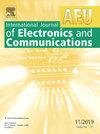Analysis of a ZVDS Class-DE current-driven full- bridge rectifier to compensation network capacitance design for WPT system
IF 3
3区 计算机科学
Q2 ENGINEERING, ELECTRICAL & ELECTRONIC
Aeu-International Journal of Electronics and Communications
Pub Date : 2025-02-01
DOI:10.1016/j.aeue.2025.155660
引用次数: 0
Abstract
The accurate, systematic, and effective design method of compensation network capacitance based on the series-series resonant topology is presented for reducing the reactive power of the wireless power transfer system. The design procedure uses a principle of a current-driven Class-DE full-bridge zero-voltage and zero-derivative-switching rectifier, a Class-D full-bridge zero-voltage-switching inverter, and a tightly coupled transformer. The key parameters of the Class-DE current-driven full-bridge zero-voltage and zero-derivative-switching rectifier as a function of diode conduction duty ratio are derived from the time-domain analysis with Fourier series, such as the normalized input resistance, the normalized input reactance, and the relationship of the input current and output voltage. Moreover, the advantages of the Class-DE current-driven full-bridge rectifier are that the diodes turn ON with zero-voltage-switching at low dυ/dt, turn OFF with zero-current switching and zero-voltage and zero-derivative switching at low di/dt. As a result, the switching losses and the switching noise considerably reduced. The simulation and experimental results were in good agreement with those predicted theoretically, and the maximum transfer power and the system efficiency at a transfer distance of 50 mm are 1.8 kW and 93.38 %, respectively. Therefore, the rectifier is especially suitable for high-frequency and high-efficiency resonant DC/DC converters in wireless power transfer applications.
求助全文
约1分钟内获得全文
求助全文
来源期刊
CiteScore
6.90
自引率
18.80%
发文量
292
审稿时长
4.9 months
期刊介绍:
AEÜ is an international scientific journal which publishes both original works and invited tutorials. The journal''s scope covers all aspects of theory and design of circuits, systems and devices for electronics, signal processing, and communication, including:
signal and system theory, digital signal processing
network theory and circuit design
information theory, communication theory and techniques, modulation, source and channel coding
switching theory and techniques, communication protocols
optical communications
microwave theory and techniques, radar, sonar
antennas, wave propagation
AEÜ publishes full papers and letters with very short turn around time but a high standard review process. Review cycles are typically finished within twelve weeks by application of modern electronic communication facilities.

 求助内容:
求助内容: 应助结果提醒方式:
应助结果提醒方式:


